The vanity has evolved from an afterthought into the starting point for your entire bathroom's…
How to Turn a Cabinet Into a Bathroom Vanity
Turn a flea market cabinet into a stylish bathroom vanity with antique charm.
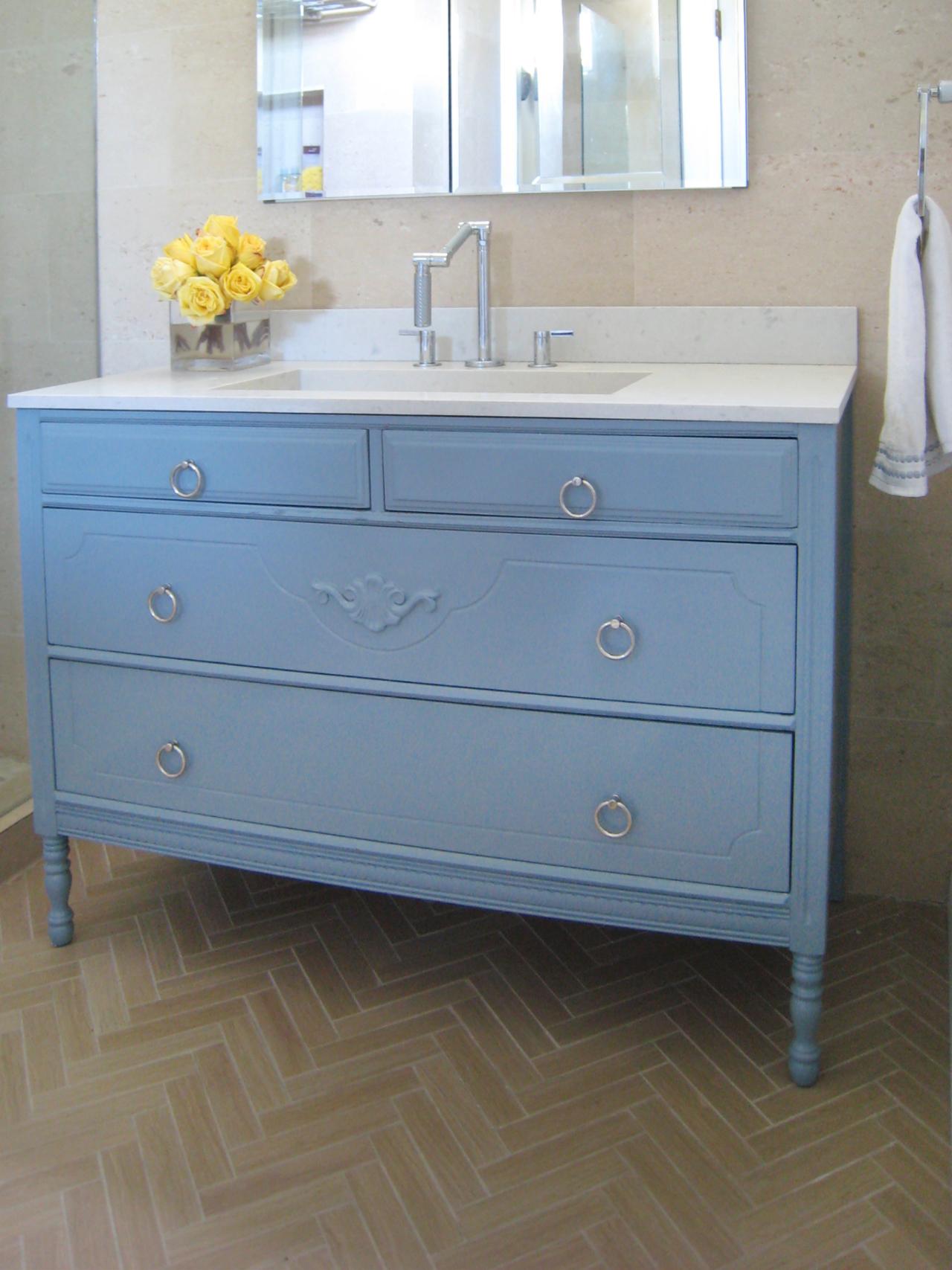
Materials Needed:
- screwdriver/electric screwdriver
- saw
- nails
- C clamps
- 2 X 4 boards
- plywood
- hammer
- staple gun
- drill bit
- measuring tape
- scale saw
- jig saw
- pencil
- caulk
- caulk gun
- painter's tape
- painter's spatula
- Liquid Nails (stone adhesive)
- rag
- acetone
Step 1: Remove Top
Unscrew the top of the cabinet and remove it from the frame.
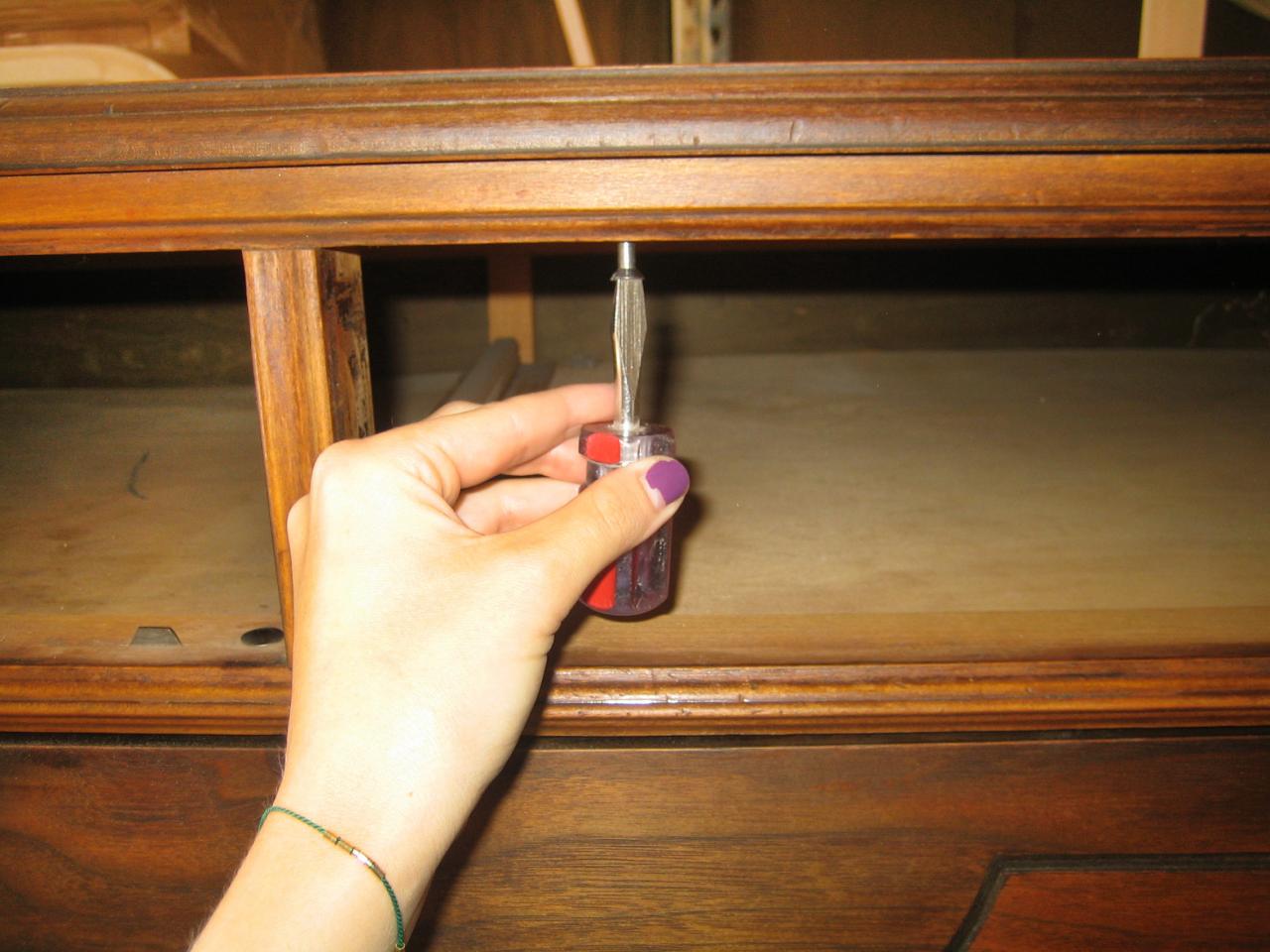
Step 2: Reinforce Frame
Using an electric screwdriver, reinforce the cabinet by putting a long screw in the center of the frame.
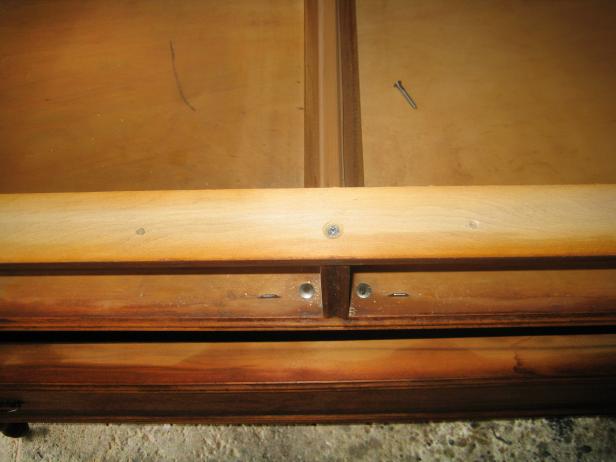
Step 3: Cut Subtop
Measure the top of the cabinet and cut a subtop out of plywood to replace the original top.
Step 4: Remove Back of Cabinet
Using a hammer and a screwdriver, remove the back from the cabinet.
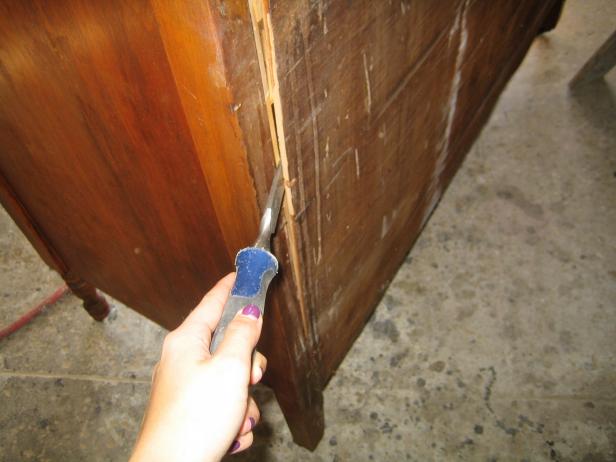
Step 5: Reinforce the New Frame
Cut a piece of 2" x 4" board to the height of the inside of the cabinet and place the board parallel to the original support beam. Glue and screw the new support beam in the center front of the cabinet to allow room for the drawers and sink.
Step 6: Remove Original Support Beams
Using a saw, remove the original vertical support beam in the center back of the cabinet. Remove the support beam that runs parallel to the bottom of the cabinet by sawing off about six inches.
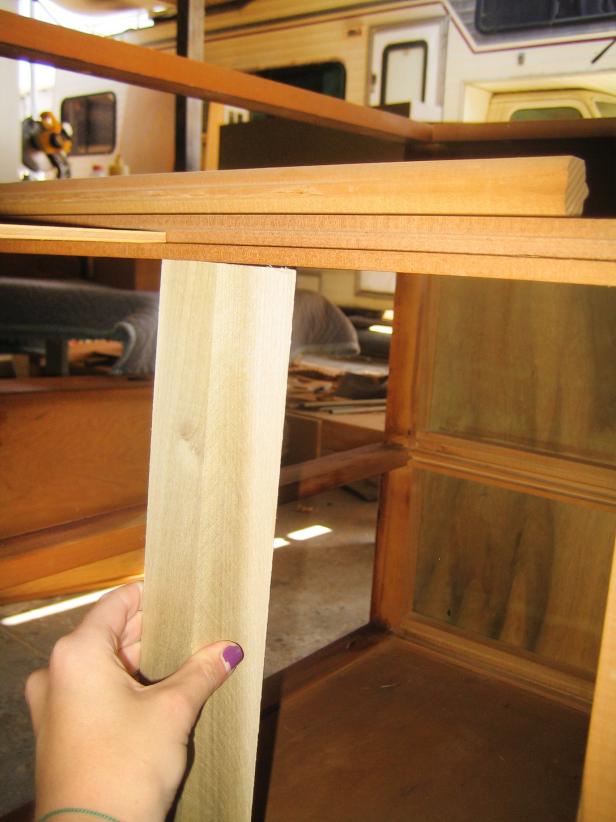
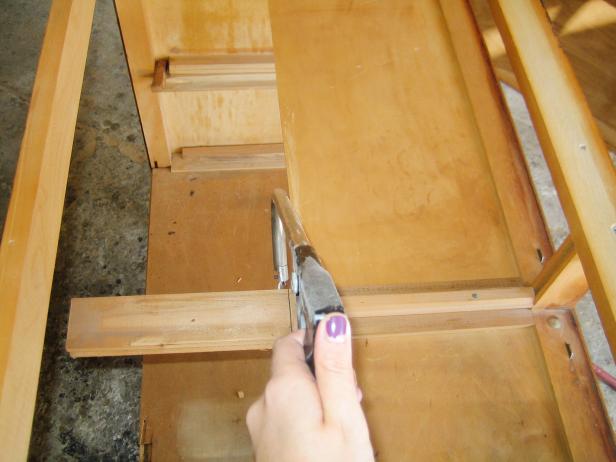
Step 7: Attach Subtop
Screw the new subtop to the top of the cabinet using a C-clamp to hold it in place. Glue and staple 4" x 2" x 2" pieces of wood underneath the subtop at each corner.
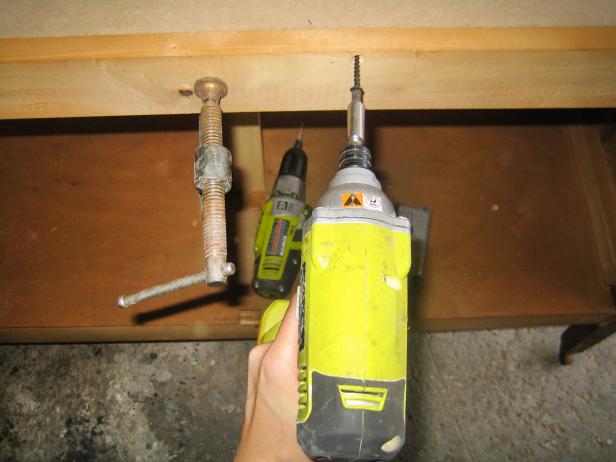
Step 8: Cut and Modify Drawers
Mark on the drawers where you will cut to leave space for the sink and pipes. Using a saw, cut out the shape. Build a frame that surrounds the cutout on the drawer, so it's the same height as the existing drawer. This will allow for functional drawers. Glue and staple the frame to the drawers. Repeat this step for all drawers.
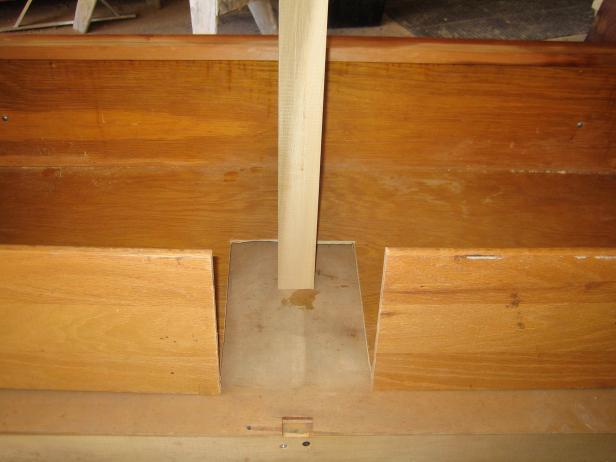
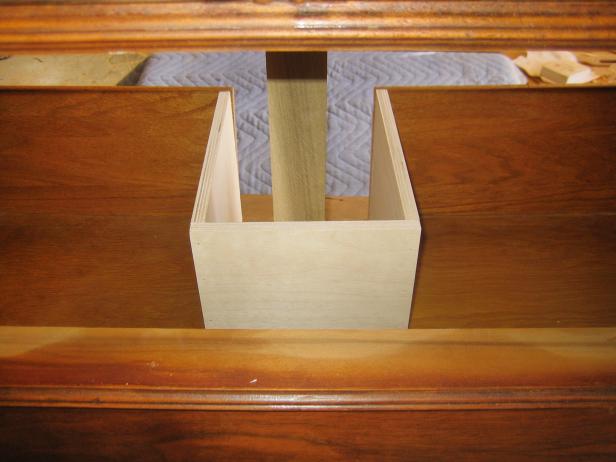
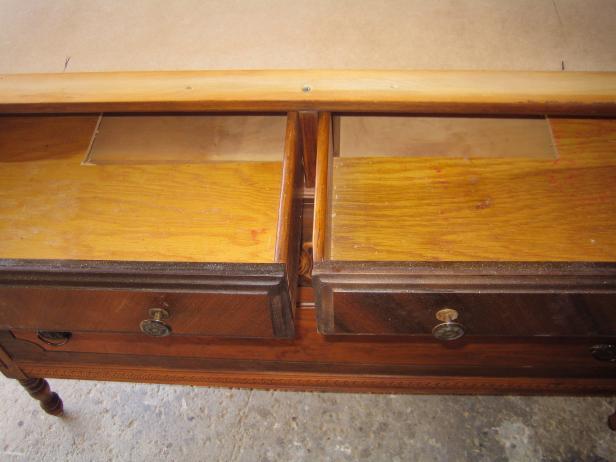
Step 9: Reattach Back of Cabinet and Cut Out Holes
Using an electric screwdriver, replace the back of the cabinet. Measure the location for the pipes and mark on the back of the cabinet. Using a drill bit large enough to accommodate the size of your pipes, drill a hole into the back of the cabinet.
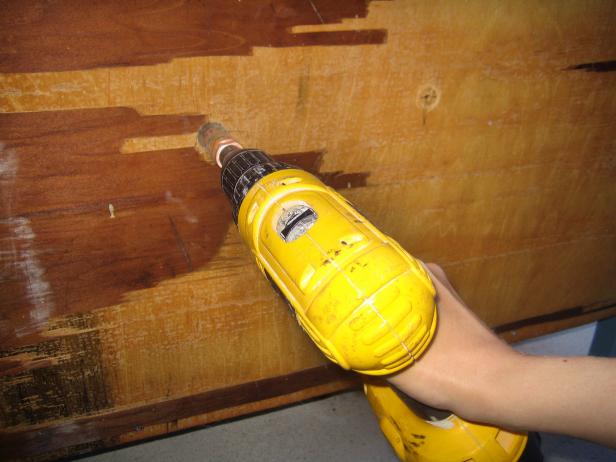
Step 10: Paint
If you want to paint the vanity a new color or apply sealer to the existing finish, you can do that at this time. After painting, place the vanity where it will be installed and anchor it to the wall with screws for support.
Step 11: Cut a Hole for the Sink
Mark the vanity's subtop for the sink cutout, using the sink's installation guide for the exact size. When cutting the hole, use a scale saw for the long cuts and a jigsaw for the corner cuts.
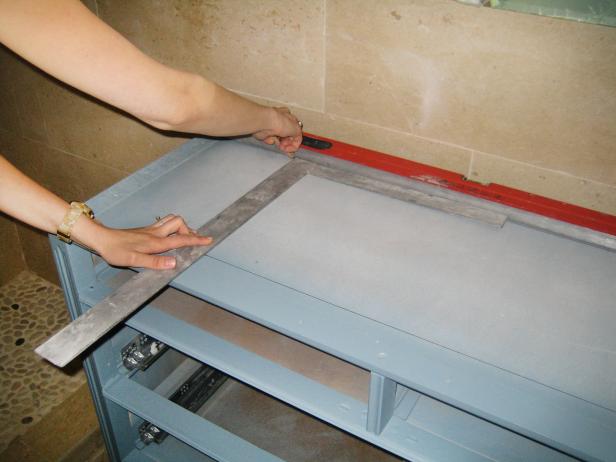
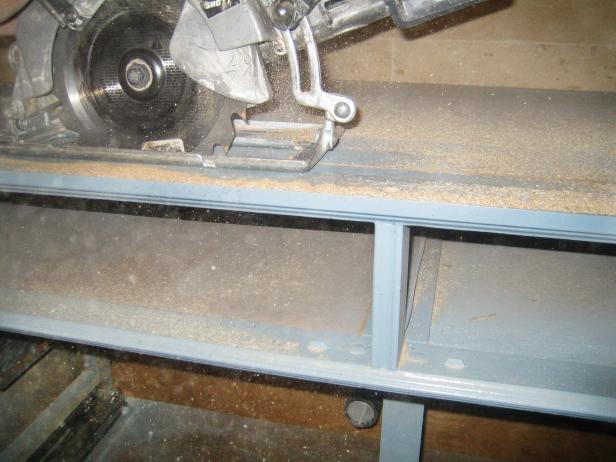
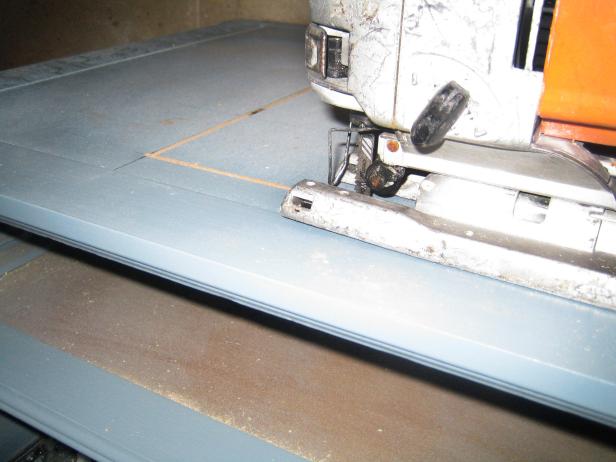
Step 12: Placing the Sink/Countertop
Place the sink into the opening. We used an all-in-one sink and countertop that was custom-made at a local stone yard. Use stone adhesive to permanently attach the counter to the vanity subtop.
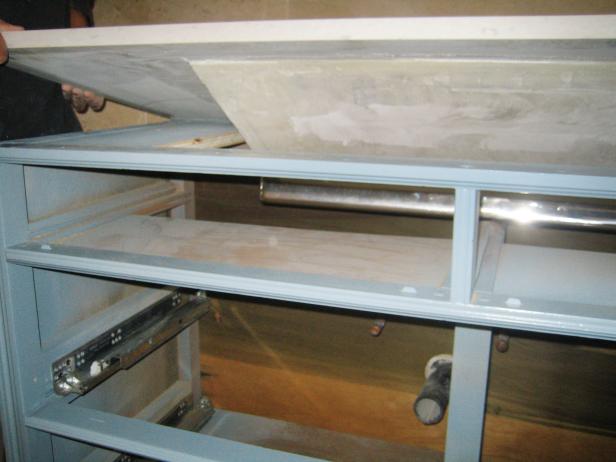
Step 13: Place Backsplash
You'll want the backsplash to rest directly on the countertop. Using a caulk gun, put several large dollops of caulk on the back of the backsplash material. Push the backsplash against the wall, so that the caulk spreads out and the material is flat against the wall.
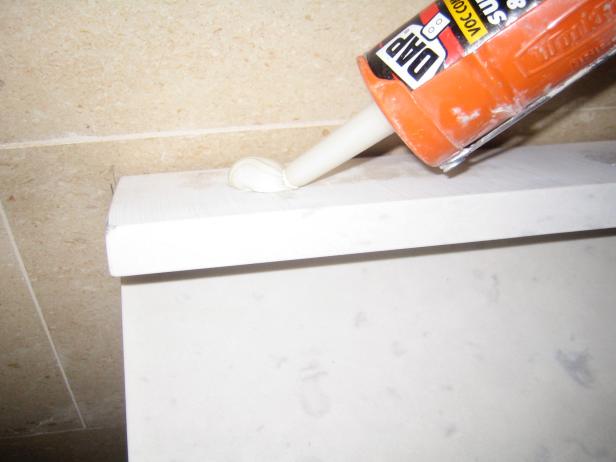
Step 14: Install Faucet and Handles
Lay masking tape along the back of the sink where the faucet and handles will be placed. Measure to the centerline where the faucet will be located. Mark the tape for the holes that are needed to hook up the plumbing fixtures. An 8" spread between handles is standard, but it can be as little as four inches, depending on the fixtures used. See the installation guide for information specific to your product. Use a 3/8" drill bit to cut the holes in your countertop. Note: It's a good idea to tape off the area between the counter and backsplash to prevent dust and debris from getting into that area when drilling. Once you're finished cutting the holes, remove the tape from the counter and backsplash.
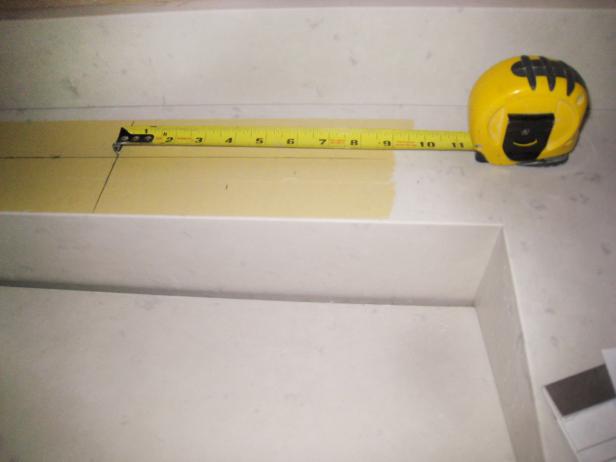

Step 15: Caulk Seams
Caulk the seams where the backsplash meets the wall and countertop. If you're using a drop-in sink, you should also caulk the seam between the sink and countertop. Tape off the wall behind the backsplash to ensure a straight, even line for the caulk. Painter's tape is recommended for this. Apply caulk with a spatula, pressing down into the seams, then pulling the spatula along the length of the backsplash to smooth out the seam.
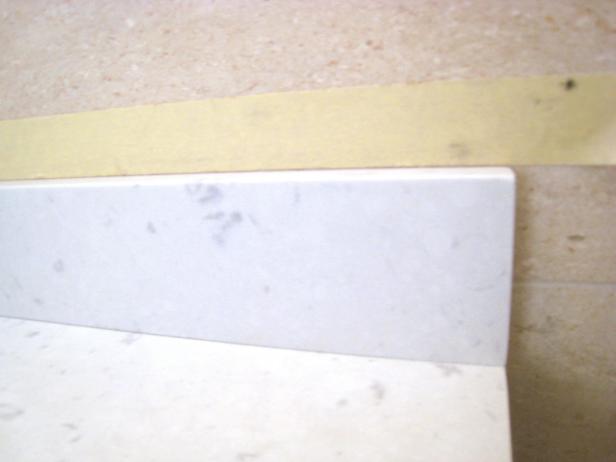
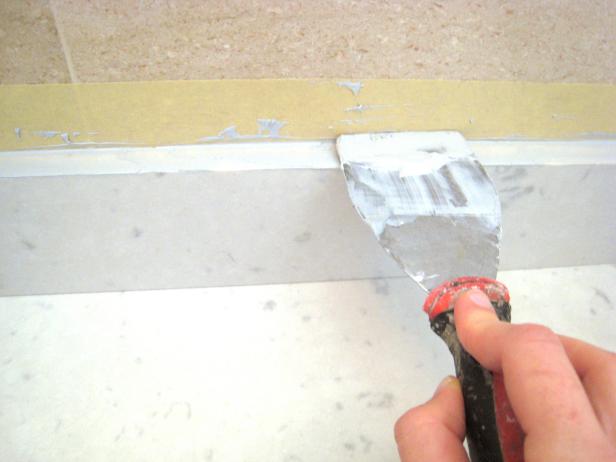
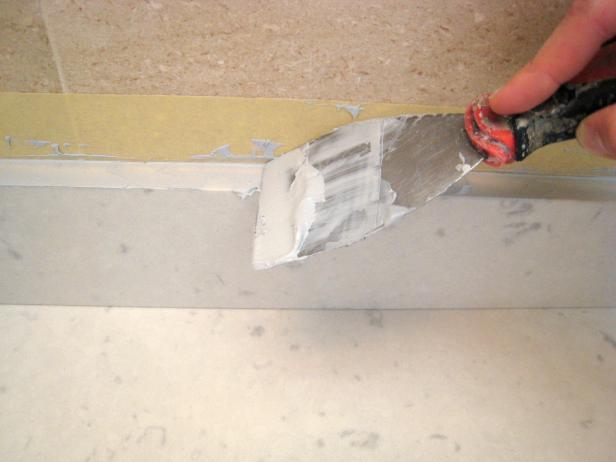
Step 16: Clean Up
Use a straight blade to remove any large pieces of excess caulk. A rag with acetone will help further smooth the seams and clean up any residue from the caulk. Remove the tape from the wall.
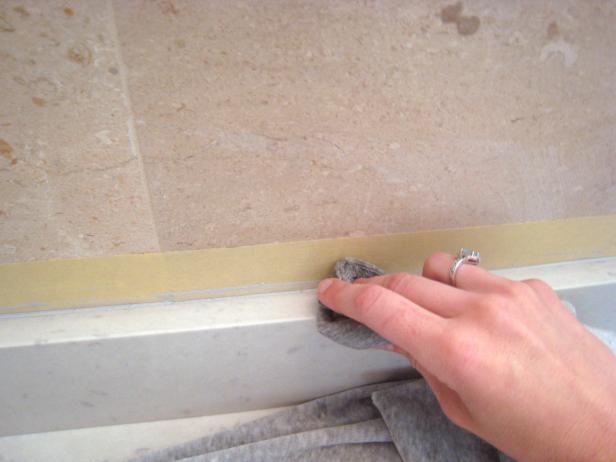
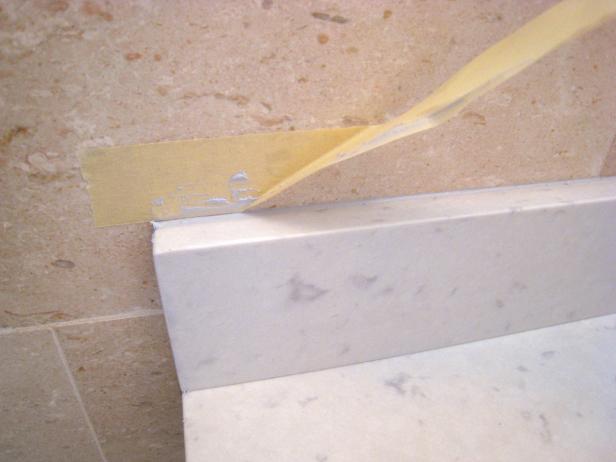
Step 17: Install Plumbing
You're now ready to attach the pipes to your new fixtures. To do so we recommend calling a licensed professional.
HGTV. How to Turn a Cabinet Into a Bathroom Vanity, [Online]. Web address: http://www.hgtv.com/bathrooms/how-to-turn-a-cabinet-into-a-bathroom-vanity/index.html (Page consulted on August 09 2011)


